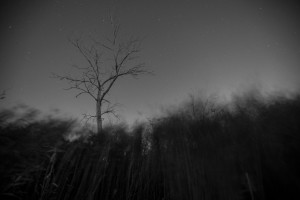
The first cameras ever made would only shoot long exposure photographs. These cameras could only capture low levels of light over a prolonged amount of time. The first known photograph of a person “Boulevard du Temple” was taken by coincidence in 1838. A gentleman just happened to get his shoes shined while the photograph was being taken. This anonymous figure stood just still enough for just long enough to appear in the final image.
Long exposure photography involved forcing your camera to shoot images at slower then needed shutter speeds in order to create a motion effect. Long exposure photographs can produce smooth or milky water, light trails, and moving object disappearing from the final image.
Depending on when you are taking your long exposure photograph, you will need the following items:
- A Camera with manual setting
- Tripod
- Neutral Density Filter (during the day)
- A remote release (Either wired or wireless)
There are a few ways to slow down your shutter speed without overexposing your photograph. You can lower your ISO, close down your aperture (f/8-f22), or use neutral density filters. Due to the shutter speed being slow, a tripod is needed to prevent motion blur on your subject.

To take a long exposure photograph, place your camera into aperture priority or manual mode. In aperture priority your camera will choose a proper shutter speed based upon what you set the aperture and ISO to in your camera. If you set your ISO to 100 and raise the aperture to close down the lens (f/18 or f/22) your camera will be forced to take a photo at a slower shutter speed. The same effect can be created by manually setting the ISO, aperture, and shutter speed but you will be forced to meter your image instead of the camera.
When photographing water during the day, place your camera on a tripod and use a neutral density filter. Neutral density filters will allow less light to pass through your lens. There are several different levels of neutral density filters each blocking more amount then the previous. ( 4x, 8x, 16x, 32x, 400x, 1000x) Variable Neutral Density filters also are available. These allow the photographer to select how much light to let through.

When shooting Long Exposure photographs at night, the neutral density filter is often not needed. The camera can be placed upon a tripod and shot using whatever light is available. However, on nights when the moon is full or when you’re near other light sources the desired effect cannot be accomplished. In those situations a Neutral Density Filter can be used.
The effects accomplished by shooting long exposure photographs in the right places can be amazing. Recently a photographer named Christopher Thomas shot long exposure photographs of New York city which make the city look abandoned. Michael Massaia, one of the artists represented by Gallery 270, has created several absolutely stunning photographs, including several photos in his “Afterlife portfolio, using long exposure techniques.
To learn more about long exposure photography stop into Bergen County Camera, comment below, or send us a message on Facebook. We’re here to help!
Visit Bergen County Camera this Thursday night, April 30th, between 6 PM and 9 PM to save 20% on all Promaster Camera batteries and filters. (including Neutral Density filters!)
